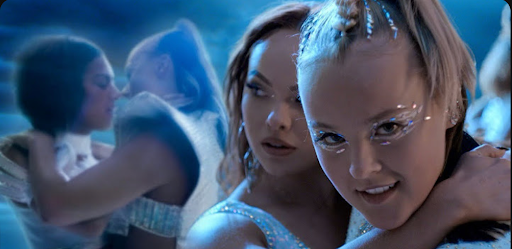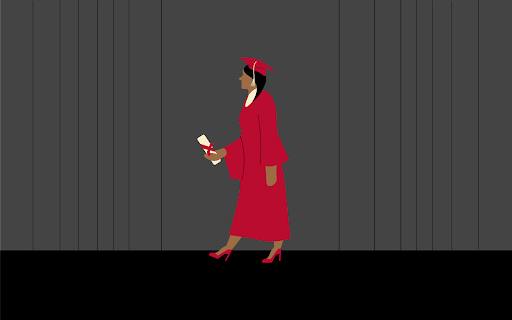The flames of the TORCH have been burning bright for the last 80 years, and they show no signs of stopping.
The TORCH, the official student newspaper of St. John’s University, was first published in 1925 at the Lewis Avenue (Brooklyn) campus of St. John’s College.
The title of the publication – “TORCH”- was chosen because of the words “a bright and shinning light” that are written in Greek on the St. John’s seal. Fred Kienle of the college registrar, who was called the “godfather of the TORCH,” suggested the title.
Originally, TORCH editors and staff members were chosen each year by the student council, and were the then proposed to the Dean and the Faculty Advisor for approval. Today, TORCH editors are decided through an election process, which includes an application and interview with the current executive board.
The TORCH was first housed at the old Brooklyn campus. The newspaper’s masthead had old English lettering and was printed in the six-column style, like the New York Times.
The paper came out every Friday and ran four pages. The TORCH had no photographs, and the printer did the entire layout.
“All stories were typed onto paper and sent to the printer,” said John R. Engelskirger, who was voted as “having done the most for St. John’s,” the founding Editor in Chief of the TORCH.
The news coverage then was limited to student clubs and organizations. It wasn’t until the 1930s that sports coverage flourished.
Engelskirger created his own staff to work on the newspaper, which operated out of a single room a third floor office with only one desk that was shared with the Editor in Chief of the Vincentian yearbook.
At first, the paper ran on advertising revenue and consequently fell into deficit within the first year. Printing cost $60 per week, which is a lot for a paper of only four pages, and no budget.
The staff in 1925 consisted of six editors, increasing to 19 in 1982. Today The TORCH has 12 editors.
Between Vol. I (1925) and Vol. V (1929), The TORCH sold for 10 cents per copy and subscriptions were $2.50 a year. After 1929, the newspaper became free of charge.
The newspaper measured on average, 13.5 x 11 inches and contained eight pages between 1925 and 1934, with the exception of the war years.
During the mid 30s, The TORCH grew from four to six pages. The advertisements were mainly for cigarettes or clothing. During this time, photographs were also introduced.
The early TORCH had what we today would consider unusual columns. These columns are completely unknown to current TORCH readers. There was advice for the love lorn and the popular “Devil’s Advocate.” “Devil’s Advocate” was a column that focused on one letter and was answered or commented on by a writer known as Devilus Advocatus.
In 1942, the newspaper went under a name change. Originally known as “The St. John’s Torch,” it simply became “The TORCH.”
During the 1940s, four of the six pages of the TORCH were dedicated to sports, and at times the paper was handwritten to conserve paper.
“The TORCH didn’t have the equipment it has now,” said Thomas Maguire, Editor in Chief (1946-47), for the 1982 Anniversary issue. “All we had were desks, typewriters and files.” However, the 1950s were an easier time. St. John’s moved into its new home in Hillcrest, Queens and female students became more involved with the management of the newspaper.
In 1957, the paper expanded to 17.5 x 11 inches and contained around 18 pages.
“Any investigative reporting was all college oriented,” said George Costigan, Editor in Chief (1956-57), for the Anniversary issue. “When we moved to Hillcrest some of the big stories were about the parking lots, the lack of parking lots, the progress of building the relationship between St. John’s and the community and the local bars.”
In the 1960s, coverage in The TORCH dealt with aspects of academic freedom. The news expanded to more controversial subjects. In the mid 60s, one of the biggest stories to ever hit The TORCH was the professors’ strike. This was the first strike in the history of American colleges.
“I learned more on The TORCH than in the classroom,” said Luke Carbone, Editor in Chief (1965-66), for the Anniversary issue in 1982. “I learned how to think, manage, stand stress, and write.”
It was during this time that The TORCH received first class honor rating in the Associate College Press Contest.
During the 60s, stories didn’t have bylines, and the paper was printed weekly.
It was also at this time that students gathered and formed the first chapter of Pi Delta Epsilon (Society of Collegiate Journalists) at St. John’s. Of the 25 students inducted, 13 of them were from the TORCH.
However people had many issues with The TORCH. Some professors and administration were not too fond of the paper.
“One of the professors would rip up our editorials in class,” Carbone said.
The TORCH and its writers continued. In the 1970s, it grew from 16 to 20 pages per week and came out on Wednesdays. During this time it reported school events, as well as world related events. The TORCH was the student’s informant on school policy. The first change in policy covered by The TORCH was the beginning of strict hazing rules, which came as a result of the untimely death of an ROTC student during a military fraternity pledging.
Colette Landers, the 1981-82 Editor in Chief led The TORCH to its first two semester ACP Five Star All American rating, its third consecutive rating. Because of her efforts to place new emphasis on graphics and color, The TORCH received the impressive rating. It also received first place with special merit in theAmerican Scholastic Press Association Review.
In the early 80s, The TORCH continued to appear with no budget and was forced to run off of advertising revenue.
The headline from the cover story on April 21, 1982 reads: “On April 1, 1982, The TORCH was suspended because of an April Fool’s issue and in addition the TORCH budget was frozen.”
The story continues to say that Student Government said that the issue was “unauthorized, unconstitutional, distasteful and in direct violation of Student Government policies.”
Around 4000 issues were removed from around campus.
The April Fools’ issue was called “NOT the TORCH” and was placed along side The TORCH upon distribution. It was simply a parody of the issues The TORCH deals with on a daily basis. Student Government claimed that it was a duplication of “Spectator,” the school’s humor magazine. However, “Spectator” editors worked with TORCH editors in the production of the paper.
Students, as well as some faculty, thought the issue was “one of the best things The TORCH has put out.”
In the early 1990s, The TORCH put out many supplements including the annual Courtside issue which deals with SJU basketball. Some of those supplements included a Black History Month Special of the TORCH, election specials for Student Government, fashion specials for the Spring/Summer and Fall/Winter, as well as “Grand Slam,” the equivalent of “Courtside” for Baseball and softball.
Some of the major headlines for the 90s included a change in logo and mascot for St. John’s. After the controversy about “Redmen” being politically incorrect, a contest was conducted by administration and Student Government to produce a new mascot. The winner in 1991 was “Johnny the Beast of the East.” He was a lion decked out in SJU apparel.
However, many felt that here was no need for a change. Then in 1994, Lou Carneseca announced the former “Redmen” would now and forever be known as the “Red Storm,” and soon to follow that announcement was the introduction of “Thunder,” a red horse with lightening for a tail.
Controversy hit The TORCH twice in the 1990s. In 1990, when a Newsday columnist wrote a column entitled “Closed Minds on Campus” and it contained some faulty information about The TORCH. The editorial board responded with a letter rebutting the remarks.
The remarks made by the columnist were regarding The TORCH’s coverage of an alleged attack on a SJU student.
The other occurred in 1997, when members of the sorority Gamma Chi stole nearly 5,000 copies of The TORCH. They were suspended and fined. The reason for the sorority’s action was because in the April 16 issue of that year, there was a story called “Is Gamma Chi Playing Fair?” It regarded events that happened during Greek Week and the sorority cheating. The sorority denied stealing the papers.
With the new millennium came a stronger TORCH. It goes without saying that newspapers all around the country including college papers will be remembered for their coverage of the tragedy of September 11. The TORCH editors devoted one issue, it’s first of the year, to the tragedy. It contained stories of SJU student’s response and feelings to the event, what would happen to St. John’s Manhattan campus students, and photos. There were no sports; except for a single story about the affect it has had on sports.
Today, The TORCH is housed on the 2nd floor of the University Center and is written and managed by St. John’s students under the supervision of student life. The TORCH measures 15.5 x 11 inches and averages 27 pages per issue. It is published 20 times from September to May.
Even though The TORCH has made changes throughout the years (new mastheads, paper sizes, etc), one thing is for sure, through it all, the paper was founded to be a voice for the students of St. John’s and will always remain the voice of the students.

















